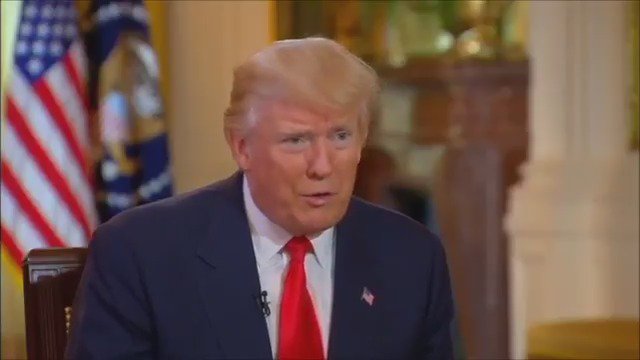 A lot of foreign policy is invisible. Unfortunately, I’m not sure that explains the rarely seen secretary of state.
A lot of foreign policy is invisible. Unfortunately, I’m not sure that explains the rarely seen secretary of state.

Secretary of State Rex Tillerson visibly meets with Chinese State Councilor Yang Jiechi before their meeting at the State Department in Washington on Feb. 28. (Yuri Gripas/Agence France-Presse via Getty Images)
Over at Foreign Affairs, James Goldgeier and Elizabeth Saunders have an excellent essay analyzing why Trump’s approach to foreign policy is so problematic. In essence, good foreign policy isn’t flashy enough for Trump:
The problem is that successful foreign policy is largely invisible. It often means paying up front for benefits that are hard to see until you lose them, or that will only be obvious when you really need them. Sometimes, successful foreign policy even means keeping real victories quiet.
Invisible foreign policy doesn’t appeal to a president who cares about showmanship and flashy successes. Although Trump’s initial storm of activity seems to have calmed in recent days, there is no evidence that he has turned to the kind of quiet, routine actions that make U.S. foreign policy run smoothly. Such efforts are not dramatic, but they are essential, and their absence could severely undermine U.S. interests. …
It’s up to those elites who still recognize and prioritize the invisible benefits that the system has provided to protect or promote it. Those inside Trump’s administration, such as Tillerson, Mattis, and recently appointed national security adviser H.R. McMaster, as well as their few allies in Congress — particularly in the Republican Party — can play a key part if they are willing to take the risk, and if Trump gives them a hearing.
Speaking of invisibility, this raises an awkward question: Where in the world is Secretary of State Rex Tillerson?
According to the State Department’s website, Tillerson made a total of one welcoming speech to Foggy Bottom and one brief readout from a meeting in his first month in office. For comparison, during John F. Kerry’s first month in office, he had delivered a similar welcoming speech, plus a speech at the University of Virginia, plus some 15 sets of readouts, plus a news conference. That’s a noticeable gap.
So is Tillerson invisibly beavering away at providing those essential but invisible components of foreign policy — or is he just invisible because he’s been marginalized?
The early signs are not promising. I noted last week that Tillerson seemed to be spending much of his time cleaning up after the president’s foreign policy foul-ups. Stories last week in Politico, Vox and The Washington Post all reported on his low profile and lack of influence within the Trump administration. The Politico article offers up particulars:
President Donald Trump promptly put the kibosh on Tillerson’s choice of a deputy, Elliott Abrams. He failed to consult with Tillerson on his policy change on Palestinian statehood or putting Iran “on notice” for its most recent ballistic missile test — whatever that may mean. The nation’s chief diplomat has been absent from the president’s key meetings with the leaders of Israel and Canada and largely invisible in Trump’s encounters with the prime ministers of Japan and the United Kingdom, as well as the White House’s diplomacy with Mexico so far. The White House’s reassurance tour of Europe, which you might expect to be helmed by the secretary of state, consisted instead of Vice President Mike Pence, Secretary of Defense Jim Mattis and Secretary of Homeland Security John Kelly. There are reports that Tillerson played a role in Trump’s walk-back on the “one China” policy. But there’s no indication that he’s been involved in high-level discussions concerning Russia.
To be fair, The Post suggests that Tillerson is doing exactly what Goldgeier and Saunders talk about in their essay: “Tillerson’s diplomacy has been conducted out of sight. He has met with several visiting foreign ministers, spoken on the phone with dozens of other diplomats and met more at the G-20 meeting.”
But for Tillerson to be good at what George Shultz called “gardening” with allies and partners, he has to be seen as having influence at home. Trump’s public rejection of Tillerson’s preferred deputy is strike one. The proposed budget cuts to State and foreign aid are strike two. And strike three is the dawning implication that maybe the Trump White House wants to gut the State Department. This would be of a piece with Stephen K. Bannon’s “deconstruction of the administrative state” as well as Trump’s suggestion that maybe he doesn’t need to appoint too many undersecretaries or assistant secretaries in his Cabinet.
Trump: Some say “I’ve done more than anybody in 100 days … I’ve saved billions & billions … I brought Ford back” pic.twitter.com/MUK12LuqKR
One thing that will be interesting to see is whether Tillerson starts to befriend Congress as a means of bolstering his influence. We already know that Senators Mitch McConnell and Lindsey O. Graham aren’t fans of the proposed cuts to the State Department.
Tillerson might just be moving down the learning curve at this point; it’s worth remembering his lack of experience in diplomatic protocol or in running a public organization. Given the direction the Trump White House is moving, however, he better learn fast.






